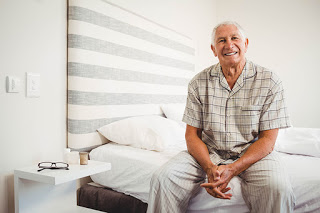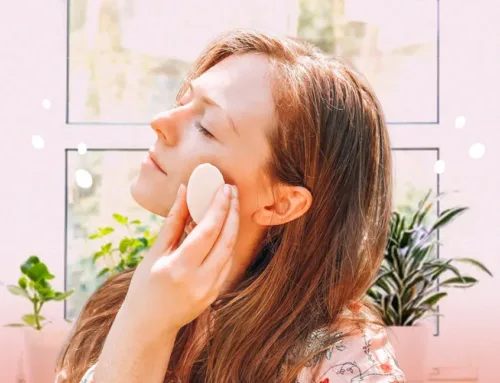Growing older entails numerous challenges ranging from joyous ones like keeping up with the grandchildren to more obnoxious ones such as where all these aches and pains came from. Perhaps one of the most common and serious difficulties is the increased risk of experiencing an injurious fall. This is especially true in places where a lot of time is spent, such as the bedroom.
There are a surprising number of falls that take place in the bedroom every year — approximately 30 percent of those that happen in the home occur there. It is particularly easy to fall when getting in and out of bed, when getting dressed, or even when walking to the restroom in the middle of the night. Although many of these falls are minor, an estimated one in 10 will be major and result in substantial medical care and lengthy recovery times.
For these reasons, it is good practice to take steps to make safety updates to the bedroom. Some simple steps include improvements to bedroom lighting, finding the perfect bed, and arranging the room to ease traffic flow.
Seeing is Key
Stumbling around in the dark, whether on the way to the restroom in the middle of the night or just walking from the light switch to the bed, is a recipe for disaster. Numerous falls are the result of a simple trip over a slipper or stubbing a toe on a piece of furniture. Installing additional lighting in the bedrooms seems like a relatively easy way to reduce the risk of falls — and it really is!
One of the simplest ways to increase lighting is to purchase nightlights. These can light hallways and other commonly used paths, while not producing a lot of bright light that can be a sleep distraction. If these lights are still a bother there are a number of nightlights that are motion sensitive now, meaning they will only turn on and provide light when someone is moving past them.
Additional suggestions for increasing lighting in bedrooms include placing a lamp on a nightstand that is reachable from in bed, installing multiple light switches in the bedroom (such as one near the bed and one near the door), and using hand clapping lights. Any of these options will improve visibility in the bedroom and that is a key to reducing falls.
Finding the Perfect Bed
Getting a better night sleep can greatly reduce falls in seniors and improve day-to-day functioning. There are numerous ways to improve sleep quality such as getting into a sleep schedule, not eating a few hours before bed, or scheduling naps. Another important factor to a good night sleep is finding the perfect bed to sleep in.
For seniors in particular, there are a few things to look for when in search of the perfect mattress, including accessibility and firmness. Mattresses should not be too low or too high — the “just right” bed height is one where you are neither climbing up into it, nor struggling to stand up from a sitting position. A firm mattress can be beneficial for seniors because it makes getting out of bed easier, reduces airway restrictions, and provides more spinal support, which can reduce aches and pains upon waking.
If getting out of bed is a challenge, it is certainly worth considering additional bedroom supplies such as railings, bed wedges, or bed lifts. These tools can make it easier to get up and going safely in the morning, reducing the risk of a fall.
Keeping the Essentials Close
Another way to reduce the risk of falls in the bedroom is to reduce the number of times it is necessary to get out of bed for things. This can be accomplished by setting up an easily accessible nightstand that holds all of the essentials such as books, reading glasses, a lamp, medications, and so on. Keeping all of these things handy means only having to crawl in and out of bed in the evening once.
It may also be worthwhile to consider keeping a medical alert or bed alarm near the bed as well. These types of things can ensure that aid arrives quickly if it is needed or if there is some sort of emergency. If there is a fall in the bedroom, this can be an essential tool to getting needed help in a timely manner.
Finally, keeping the things that are not considered essential out of the way can also make a difference in the reduction of falls in the bedroom. Reduce tripping hazards by removing clutter off of the floor before bedtime and perhaps doing away with furniture that can be a tripping hazard such as rugs. Organize drawers and other bedroom storage by placing things that are frequently used in the most easily accessible locations.
Although senior falls in the bedroom are some of the most common, falls are frequent throughout the home and a number of small home remodels for seniors can help reduce their likelihood. Making updates to the bedroom is a good first step and can make a huge difference in overall safety of elderly loved ones. These simple adjustments should help to get started!
Brooke Faulkner is a senior rights advocate and mother of two in the Pacific Northwest. She loves spending time with friends and family at the assisted living facility near her home, and has collected more stories there than she can count.




